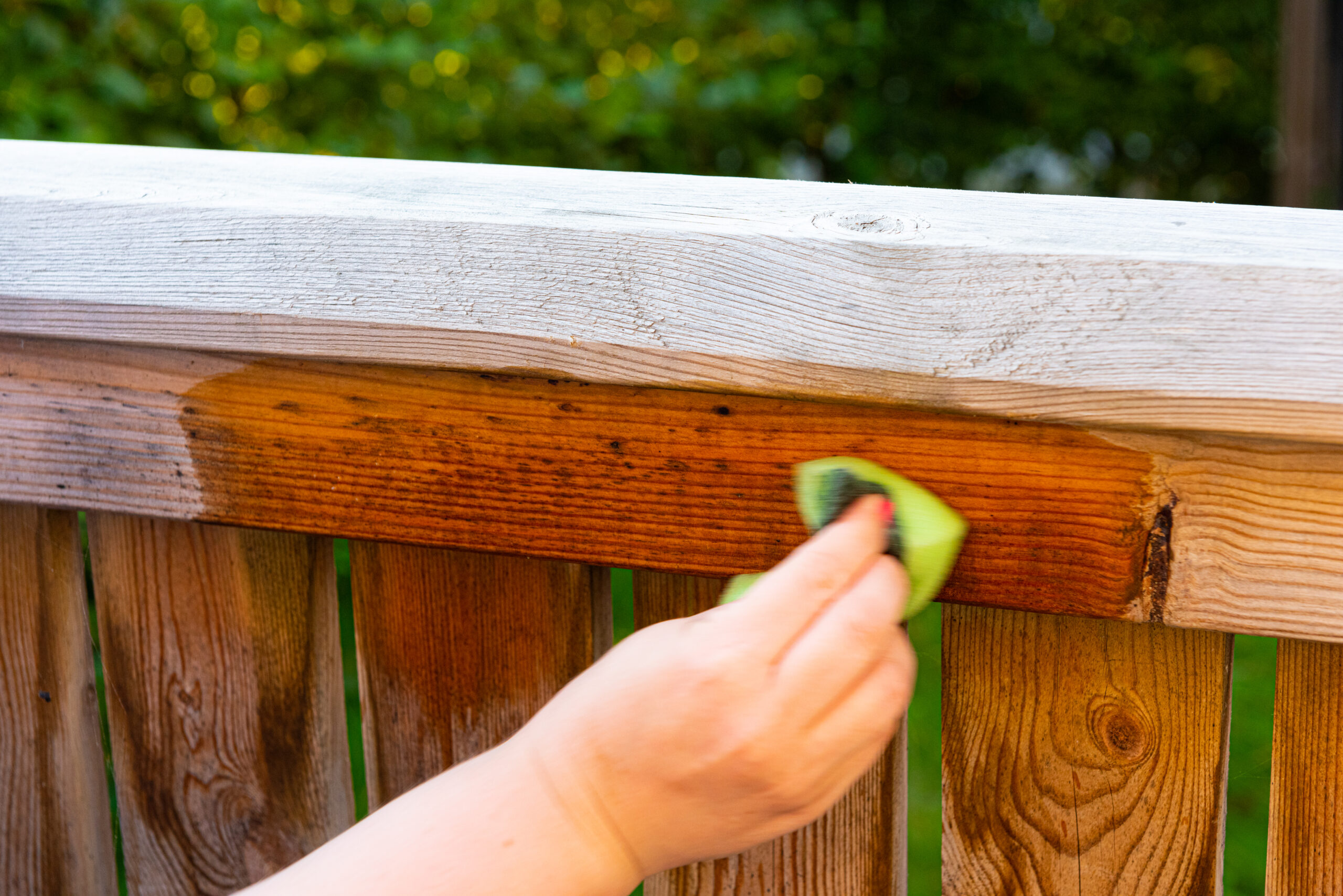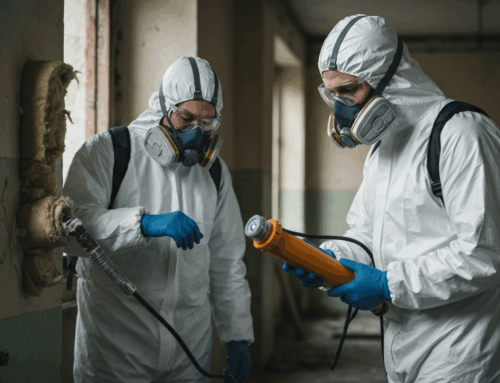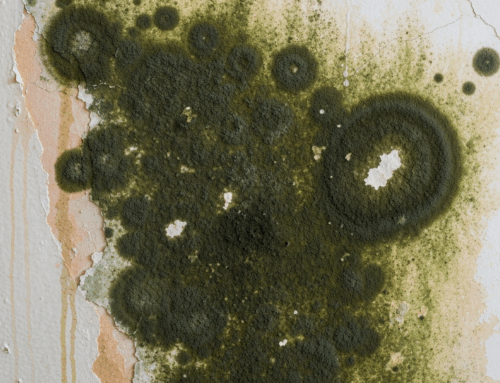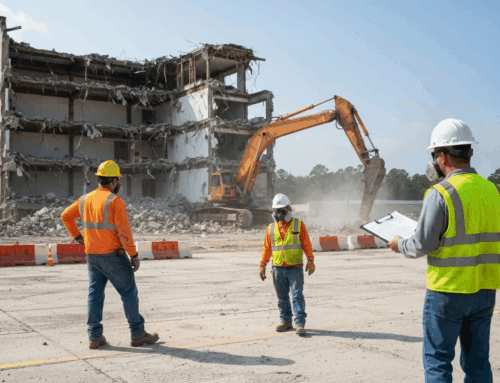Mold is a common issue, and in the humid climate of South Carolina, it can pose a significant threat to commercial properties. Beyond an unpleasant smell or unsightly patches, mold growth can lead to serious health concerns for employees and customers, as well as substantial structural damage to the building itself. Addressing mold promptly and correctly is crucial for maintaining a healthy and safe environment and protecting your business investment. This is where expert commercial mold remediation South Carolina services become essential.
Unlike residential mold problems, commercial mold infestations often involve larger areas, more complex building structures, and greater potential liability. Business owners and property managers in South Carolina need to be particularly vigilant due to the state’s climate, which provides ideal conditions for mold spores to thrive when moisture is present. Understanding the risks and knowing how to respond are the first steps in effectively managing this challenge.
The Silent Threat: Understanding Mold in South Carolina Businesses
Mold is a type of fungus that grows in damp, humid environments. It reproduces by releasing tiny spores into the air, which are invisible to the naked eye. These spores are ubiquitous, meaning they are found almost everywhere, both indoors and outdoors. The problem arises when mold spores land on a surface with sufficient moisture and a food source, allowing them to begin growing and colonizing.
In South Carolina, the subtropical climate, characterized by high humidity levels throughout much of the year, creates an environment where mold growth is a persistent risk. Commercial buildings, with their often complex HVAC systems, plumbing, and roofing structures, can harbor hidden moisture sources that promote mold growth. Leaky pipes, roof leaks, foundation issues, poor ventilation, or even excessive condensation can all provide the necessary moisture for mold colonies to flourish undetected behind walls, under flooring, or in ceiling tiles.
Identifying mold early can be challenging. While large colonies may be visible as discolored patches (often green, black, white, or orange) and produce a musty odor, mold can also grow in hidden areas, impacting air quality long before it’s seen. This makes it a silent threat, potentially affecting occupants and the building’s integrity without immediate visual cues.
For businesses, this silent threat translates into potential operational disruptions, decreased employee productivity due to health issues, and significant costs associated with repairs and remediation if left untreated. Effective commercial mold remediation South Carolina starts with understanding where and why mold grows in the local climate.
Hidden Dangers: Health and Structural Risks of Commercial Mold
The presence of mold in a commercial building poses multiple risks, impacting both the people inside and the structure itself. These dangers are often hidden, compounding the problem until symptoms or damage become undeniable.
From a health perspective, exposure to mold spores can trigger a range of adverse reactions in individuals. The severity depends on the type of mold, the level of exposure, and the individual’s sensitivity or existing health conditions. Common health issues associated with mold exposure include:
- Allergic reactions: Sneezing, runny nose, red eyes, skin rash, and asthma attacks.
- Respiratory problems: Coughing, wheezing, difficulty breathing, and aggravation of asthma or other chronic lung conditions.
- Irritation: Eye, nose, throat, and skin irritation.
- Headaches and fatigue.
Certain types of mold, sometimes referred to as toxic mold (though the mold itself isn’t toxic, the mycotoxins they produce can be), can cause more severe health effects, particularly with prolonged exposure. Protecting the health and safety of employees, customers, and visitors is a primary responsibility for any business owner or property manager.
Beyond health concerns, mold can cause significant structural damage to a building. As mold grows, it feeds on the materials it colonizes, which can include:
- Drywall
- Wood (framing, subflooring, structural beams)
- Ceiling tiles
- Carpeting
- Insulation
Over time, this degradation can weaken structural components, leading to costly repairs and potentially compromising the safety of the building. Mold damage can also ruin finishes, requiring extensive replacement of affected materials. The longer mold is allowed to grow, the more extensive and expensive the damage becomes.
Furthermore, a known mold problem can lead to legal liabilities, insurance claim complications, and damage to a business’s reputation. Addressing mold is not just about cleanliness; it’s about risk management, ensuring a safe workplace, and preserving asset value. When considering successfully restoring property value after mold damage, it’s important to understand that this applies equally to commercial properties as it does to homes.
Why Speed is Critical When Dealing with Commercial Mold
When mold is discovered or suspected in a commercial property, time is of the essence. The rate at which mold can spread is often underestimated. Under favorable conditions (moisture, food source, moderate temperature), mold can begin growing within 24 to 48 hours of water exposure. A small patch can quickly expand into a large infestation, increasing the scope of the problem, the health risks, and the cost of remediation.
Delayed action allows mold to penetrate deeper into building materials, making it more difficult and expensive to remove. What might have started as a surface issue could turn into a structural problem requiring significant demolition and reconstruction. The longer mold spores are released into the air, the greater the potential health impact on building occupants. This can lead to increased absenteeism, decreased productivity, and potential liability issues.
For businesses, prompt action minimizes downtime. Extensive mold remediation can require temporarily closing off affected areas, or even the entire building, depending on the severity and location of the infestation. By addressing the issue quickly, the disruption to business operations can be significantly reduced.
Moreover, rapid response helps prevent secondary damage. Mold growth often accompanies water damage. Addressing the mold and the underlying moisture source quickly can limit further deterioration of materials and prevent other issues like rot. Engaging expert commercial mold remediation South Carolina services swiftly is the most effective way to contain the problem and mitigate its consequences.
The Steps of Effective Commercial Mold Remediation
Effective commercial mold remediation is a multi-step process that goes far beyond simply cleaning visible mold. It requires specialized knowledge, equipment, and protocols to ensure the mold is safely removed and prevented from returning. While specific situations may vary, the general process typically involves the following key stages:
- Assessment and Inspection: A professional mold remediation service will begin with a thorough inspection to identify the extent of the mold growth, the types of mold present, and the underlying moisture source causing the problem. This may involve visual inspection, moisture meters, thermal imaging, and air sampling to assess spore levels. Identifying and addressing the moisture source is paramount; without it, mold will inevitably return.
- Containment: To prevent mold spores from spreading to unaffected areas during the remediation process, containment measures are crucial. This involves sealing off the work area using physical barriers (like plastic sheeting) and often utilizing negative air pressure machines equipped with HEPA filters. Negative air pressure ensures that air flows into the contaminated area, not out, trapping spores within the containment zone.
- Air Filtration: High-efficiency particulate air (HEPA) filters are used within the containment zone and throughout the building to capture airborne mold spores and other particulates. Air scrubbers draw air through these filters, improving air quality during and after the remediation work.
- Removal of Mold-Infested Materials: Mold growing on porous materials like drywall, insulation, carpeting, and wood often cannot be simply cleaned; it must be safely removed and disposed of. Trained technicians wear appropriate personal protective equipment (PPE) to avoid exposure during this process. Materials are bagged and sealed within the containment area before being transported for proper disposal. In some cases, removing hazardous materials might be necessary before proceeding with remediation, a process requiring careful planning, much like removing hazardous materials before demolition in SC for safety.
- Cleaning and Disinfection: Non-porous and semi-porous materials that have been affected by mold can often be cleaned. This involves using antimicrobial and antifungal cleaners specifically designed for mold removal. Surfaces are scrubbed, wiped down, and treated to eliminate remaining mold residues and disinfect the area.
- Drying: Thorough drying of the affected area and any remaining materials is critical to prevent mold from regrowing. Dehumidifiers, air movers, and structural drying techniques are employed to remove excess moisture from the air and building materials. Moisture levels are carefully monitored to ensure complete drying.
- Restoration: Once the mold has been removed, the area is cleaned and dried, and post-remediation testing confirms the issue is resolved, restoration can begin. This involves repairing or replacing damaged building materials, repainting, installing new flooring, and any other necessary reconstruction to return the property to its pre-mold condition.
- Post-Remediation Verification: A final inspection and testing are conducted to ensure that the mold has been successfully removed and that airborne spore levels are within acceptable limits. This step provides peace of mind and documentation that the remediation was effective.
Choosing a reputable service for commercial mold remediation South Carolina ensures that all these steps are performed correctly and safely, minimizing the risk of recurrence and protecting the health of building occupants.
Proactive Measures: Preventing Mold Recurrence
While professional remediation is essential for addressing existing mold problems, prevention is key to avoiding future infestations. Commercial property owners and managers in South Carolina can implement several proactive measures to minimize the risk of mold growth:
- Control Moisture Sources: Regularly inspect plumbing, roofs, windows, and foundations for leaks. Address any water issues immediately, no matter how small they seem. Ensure proper drainage around the building perimeter.
- Manage Humidity: Maintain indoor humidity levels between 30% and 50%. This can be achieved through the use of properly sized and maintained HVAC systems. Consider using dehumidifiers in areas prone to high humidity, especially during warmer, more humid months in South Carolina. Monitor humidity levels regularly, particularly in basements, crawl spaces, and storage areas.
- Ensure Adequate Ventilation: Proper ventilation helps to remove moisture from the air. Ensure exhaust fans in restrooms, kitchens, and other moisture-generating areas are functioning correctly. Consider increasing fresh air ventilation where appropriate, while still managing humidity.
- Maintain HVAC Systems: Regularly inspect, clean, and maintain HVAC systems, including ducts, cooling coils, and drain pans. Clogged drain pans or dirty coils can become breeding grounds for mold and distribute spores throughout the building.
- Use Mold-Resistant Materials: When building or renovating, consider using mold-resistant drywall, paint, and insulation in areas susceptible to moisture.
- Respond Quickly to Flooding or Water Damage: Extract water, dry the affected area thoroughly, and clean/disinfect materials within 24-48 hours of any water intrusion to prevent mold growth.
- Regular Inspections: Conduct routine visual inspections of areas known to be potential mold hotspots (e.g., areas around plumbing, basements, attics). Address any signs of water staining or musty odors promptly.
Implementing these preventative strategies can significantly reduce the likelihood of needing commercial mold remediation South Carolina services in the future, saving your business time, money, and potential headaches.
Finding Trustworthy Commercial Mold Remediation South Carolina Services
When faced with mold in your commercial property, choosing the right remediation partner is critical. You need a service provider with the expertise, experience, and equipment to handle commercial-scale mold issues safely and effectively, in compliance with relevant standards and guidelines. Here are some factors to consider when selecting commercial mold remediation South Carolina professionals:
- Experience and Training: Look for companies with specific experience in commercial mold remediation. Their technicians should be trained and certified by recognized organizations (e.g., IICRC – Institute of Inspection, Cleaning and Restoration Certification) in mold remediation protocols and safety procedures.
- Comprehensive Process: Ensure the company follows a detailed, multi-step process that includes thorough inspection, containment, safe removal, cleaning, drying, and post-remediation verification. Be wary of services that offer quick fixes or simply spray over the mold.
- Proper Equipment: A professional service will use specialized equipment, such as HEPA air scrubbers and vacuums, negative air machines, industrial dehumidifiers, moisture meters, and appropriate personal protective equipment (PPE).
- Insurance and Licensing: Verify that the company is properly licensed and insured for mold remediation work in South Carolina. This protects your business in case of accidents or issues during the project.
- References and Reputation: Ask for references from previous commercial clients and check online reviews. A reputable company will have a track record of successful projects and satisfied customers.
- Transparency and Communication: Choose a company that provides a clear, detailed proposal outlining the scope of work, timeline, and costs. They should communicate openly with you throughout the process.
- Understanding of Regulations: While South Carolina may not have extensive state-specific commercial mold regulations, professionals should be aware of federal guidelines and industry best practices for handling mold and associated materials.
- Focus on the Source: A good remediation company will emphasize the importance of identifying and fixing the underlying moisture problem to prevent recurrence.
By carefully evaluating these factors, you can find a trustworthy partner for commercial mold remediation South Carolina that will effectively address your mold issue and help protect your property and occupants. Don’t hesitate to get a free estimate to understand the scope and cost involved.
Addressing mold in a commercial building is a serious undertaking that requires professional expertise. From understanding the silent threat posed by mold in South Carolina’s climate to implementing proactive prevention strategies and choosing the right remediation service, taking timely and informed action is paramount. Ensuring a healthy indoor environment protects not only the physical structure of your business but also the well-being of everyone who enters its doors. Investing in professional commercial mold remediation South Carolina is investing in the long-term health and stability of your business.
Have questions? Contact us here.





